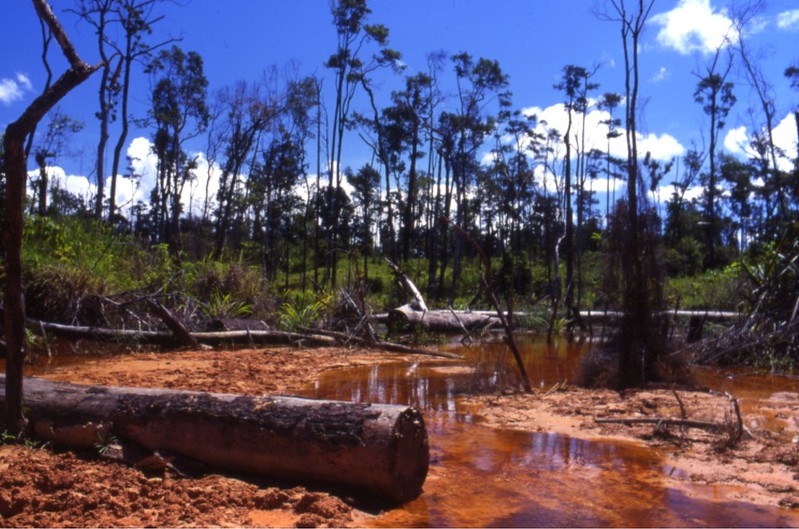by Bruce Shoemaker and Ian G. Baird
A newly released article by the International Hydropower Association (IHA), titled “Laos: Hydropower built in consultation with Indigenous communities” by Eduard Wojczynski, holds up the Nam Theun 2 (NT2) hydropower project as a positive example of benefit-sharing for Indigenous communities. The article is presented as a case study in support of the IHA’s new how-to guide on “Engaging Indigenous People in Hydropower.” However, Nam Theun 2’s troubled legacy suggests that the IHA may have learned the wrong lessons.
Nam Theun 2 Dam “Green” Falsehoods Repeated
Unfortunately, the Nam Theun 2 case study repeats long-discredited myths and distortions about the project—myths that even the project’s biggest backers, the World Bank, and the Asian Development Bank, are no longer willing to publicly defend.
Our 2018 peer-reviewed book on Nam Theun 2, Dead in the Water: Global Lessons from the World Bank’s Model Hydropower in Laos (University of Wisconsin Press), which included contributions from 17 researchers with considerable first-hand knowledge about the project, dissected the project backers’ early claims of success. This exhaustive treatment of the subject found that the project’s benefits have been vastly exaggerated and that its largest backers had failed to recognize or acknowledge its serious deficiencies.
The much-touted consultations with Indigenous communities, for example, were severely constrained by the lack of political space in Lao PDR for genuine consultation or voicing concerns. Indeed, the Lao government does not even recognize any of its ethnic minorities as Indigenous. Crucially, these consultations had little real meaning, as the decision to develop the project had already been made by the time these consultations started, making them more of a public relations exercise than any sincere attempt to promote meaningful Indigenous participation. Meanwhile, as Dead in the Water’s chapter “Elusive Conservation” by William Robichaud documents, the project’s central environmental goal of protecting the adjacent conservation area, which led to NT2’s branding as a “green” project, was in many ways an abject failure due to logging, poaching, and corruption.
The IHA’s primary assertion, that Nam Theun 2 achieved its goals of benefitting Indigenous peoples, quickly falls apart when scrutinized. The project’s own International Environmental and Social Panel of Experts referred to in Wojczynski’s article, extensively documented the failure of most of the livelihood restoration measures taken by the project for those resettled from the reservoir. Nam Theun 2 has also caused serious impacts to tens of thousands of people located downstream—including for many Indigenous communities. Our earlier 2017 paper, co-authored with Kanokwan Manorom, documented the harm experienced by Indigenous Brou communities, especially women, downstream from Nam Theun 2. It similarly recorded the failure of the project developers and their financial backers to even recognize the existence of Indigenous communities in the affected Xe Bang Fai basin, much less to adequately compensate them for their losses.
Backers and Experts Reverse Their Support
The IHA’s glowing assertions about Nam Theun 2’s purported inclusion of Indigenous peoples in benefit-sharing have largely been discredited. Upon the conclusion of his many years on the Panel of Experts, eminent anthropologist Thayer Scudder called Nam Theun 2 as his “final disappointment” in a career-long effort to see if large hydropower could actually benefit local communities. The World Bank and Asian Development Bank, meanwhile, have ceased their earlier intensive public relations campaign characterizing Nam Theun 2 as a model for so-called sustainable hydropower.
Large Hydropower Backers Continue to Neglect Indigenous Peoples’ Rights
For the IHA to continue to carry water for Nam Theun 2, recycling long-discredited and exaggerated claims about its purported benefits without any acknowledgment of the extensive documentation of its failures appears to be a deliberate attempt to distort reality. This is a poor basis for claiming any sort of insight into how to more widely engage with Indigenous Peoples negatively impacted by large hydropower projects such as Nam Theun 2. The IHA would do well to learn from the Nam Theun 2 experience, but it should be seen as a cautionary tale rather than a model.
Bruce Shoemaker is an independent researcher living on a tributary of the Klamath River in northern California who focuses on natural resource conflict issues in the Mekong Region.
Ian G. Baird is a Professor, Department of Geography, University of Wisconsin-Madison. Director, Center for Southeast Asian Studies, University of Wisconsin-Madison
Featured Photo: Illegal logging of the Nakai Plateau occurred before it was clear that the Nam Thuen 2 dam would go forward and submerge this area. Bolikhamxai and Khammouane Provinces, Laos

